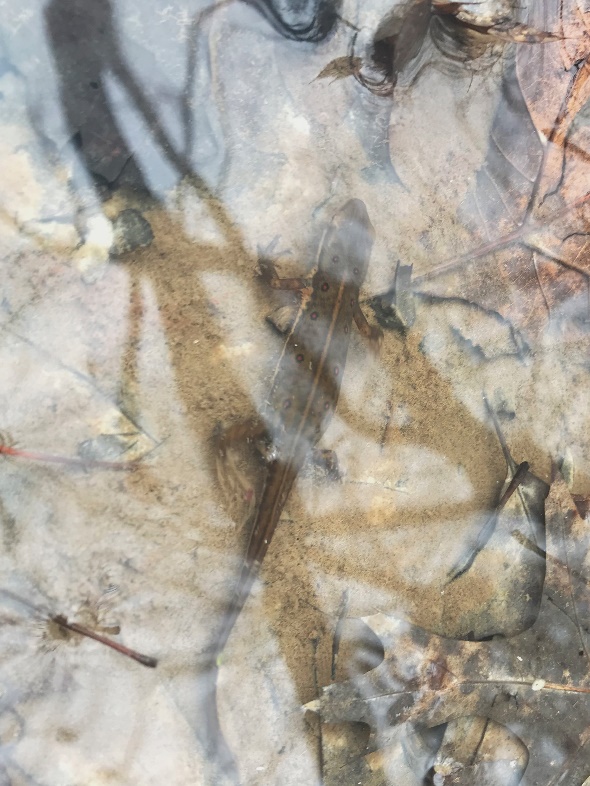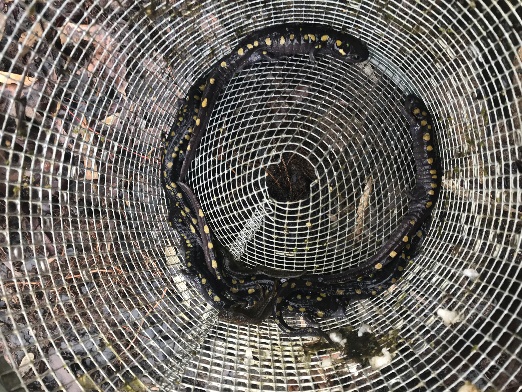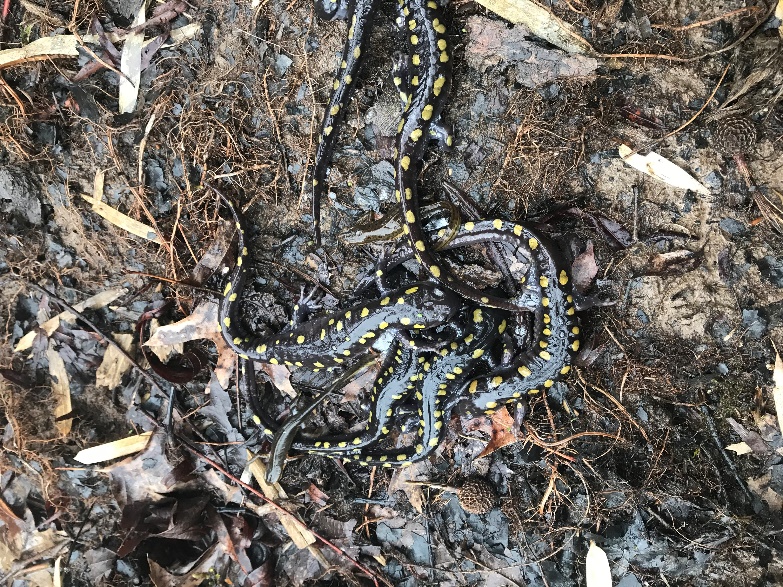Blog
Go Spots!

By Olivia Espinoza, Natural Areas Manager
I’m certain that one of the staples of a childhood is the discovery of a tadpole in a ditch, puddle, or pond. I grew up with a lake in my backyard and would spend the summers with my head peering over the water watching fish, tadpoles and other creatures doing aquatic creature things. At Cincinnati Nature Center we also have a lake and about 10 ponds that you can also hang your head over to watch some of the life that call the water their home. They vary in size and serve different ecological purposes and it is interesting to see how different each one can be. Life in one pond can be quite different from the life in another that’s just a few hundred yards away. In fact, some of our ponds also serve as vernal pools.
Vernal pools are unique habitats that typically hold water for only part of the year or experience a drying phase every few years. Some amphibians, like salamanders, require a vernal pool habitat for breeding. These species are called obligate species. The dry phase is essential because it prevents year-round water-dependent animals like fish from living in the pools. Any guess as to why this might be a problem for some amphibians? If I had the opportunity to hear your answer, I’m quite certain you would say “because them pesky fish would eat em’ all up!” Just kidding, you don’t talk like that, but the answer is still correct. Obligate vernal pool species cannot withstand predation from fish.

Most of the ponds at the Nature Center do not have fish. We monitor these fishless ponds each spring for amphibian and other aquatic life. Some of the species we find are considered indicators and can give us information on the health of an ecosystem.
This spring I was determined to find one species, the spotted salamander. It had been recorded several years ago, but had not been seen in quite a while. Personally, I had never found a spotted salamander and I had it on my “species bucket list.”
They aren’t uncommon. Elusive is maybe a better word to describe them. So, one afternoon after it had rained, I set a minnow trap in the pond they had previously been recorded in. The next morning, I headed out to check the trap. I was feeling quite confident while pulling the trap in, but also whispering to myself, “please be in there!” And behold, there they were! I had no one with me to share in my excitement so naturally I began snapping photos and sending them to all the people I thought would be just as thrilled.

As much as the Elmyra Duff in me wanted to hug them and squeeze them and love them forever, I made the responsible and adult decision to release them back to their home. This was of course after taking a ridiculous number of photos of them. Surprisingly, I did not even realize until later that the Spotted Salamander is Ohio’s state amphibian. All the more reason to continue to provide the habitat they so desperately require for their survival. Perhaps, to bring more awareness and education to this species a college somewhere should adopt the Spotted Salamander as their mascot. I mean “Go Spots!” has a nice ring to it, don’t you think?